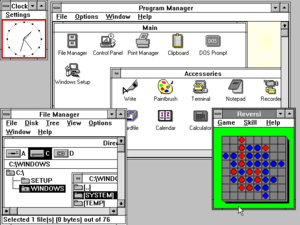THE SOFTWARE AS AN EDUCATIONAL RESOURCE
Software
Ø is
a program that a computer uses to perform
tasks.
Two Kinds of Software
1). Systems Software
2). The Application Software
Two Kinds of Software
1). Systems Software - This is the operating system that
is found or bundled inside all computer machines.
2). The Applications Software - This contains the system
that commands the particular task or solves a particular problem.
The applications software may be:
a). A Custom
Software - is made for specific tasks often by large corporations, or
b). A Commercial
Software - packaged for personal computers that helps with a variety of tasks
such as writing papers, calculating numbers, drawing graphs, playing games and
so much more.
MICROSOFT WINDOWS
Microsoft
Ø Computer
Software Company.
Windows
Ø any
of several microcomputer operating systems or environments featuring a graphic
user interface.
Microsoft Windows
Ø program
Ø Microsoft
Windows/ Windows
Ø Shell
GUI
Ø Graphic
User Interface.
Windows Versions:
Windows 1.0, the first version, released in 1985
Windows 95, released in August 1995

Windows 3.0, released in 1990

The latest stable Windows release, Windows 7
Future of Windows
The Start Screen of Windows 8 RTM .
Windows is in itself a self- contained operating system
which provides:
v User
Convenience - just click a file name to retrieve data or click from program to
program as easy as changing channels in your TV screen
v A
New Look - fancy borders, smooth and streamlined text fonts.
v Information
Center - Windows puts all communications activities ( e – mail, downloads etc.
in a single screen icon ); adapts/configures the computer for the Internet.
v Plug
and Play - configures the computer with added components, such as for sound or
video.
INSTRUCTIONAL SOFTWARE
Ø can be visited in Internet or can be bought
from software shops.
Ø decide
on the best computer- based instructional materials.
Guidelines in Evaluating Computer- Based Educational
Materials
• Be
extremely cautious in using CBIs and ‘free’ Internet materials
• Don’t
be caught up by attractive graphics, sound, animation, pictures, video clips
and music forgetting their instructional worth
• Teachers
must evaluate these resources using sound pedagogical principles
• Among
design and content elements to evaluate are:
Ø
text legibility
Ø
effective use of color schemes
Ø
attractive layout and design
Ø
easy navigation from section-to-section
• Clarity in the explanations and illustrations
of concepts and principles
•
Accuracy, coherence, logic of information
•
Their being current since data/statistics continually
change
•
Relevance/effectiveness in attaining learning
objectives
•
Absence of biased materials
No comments:
Post a Comment